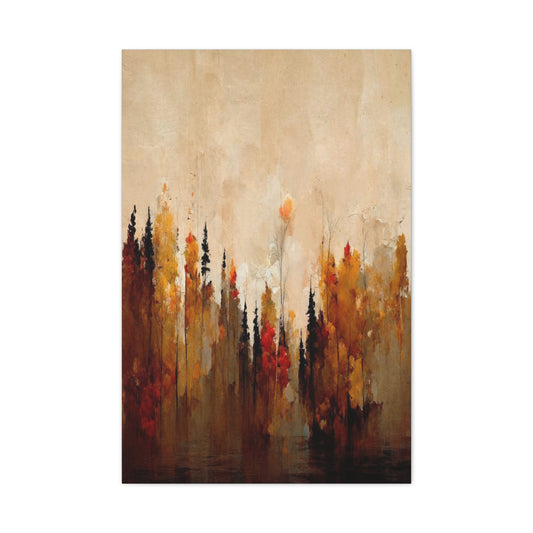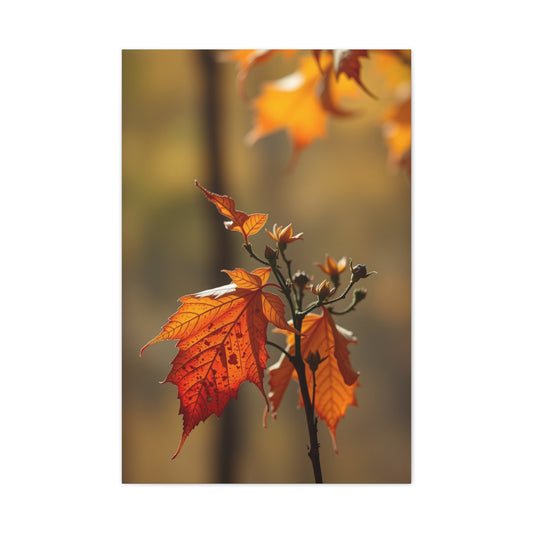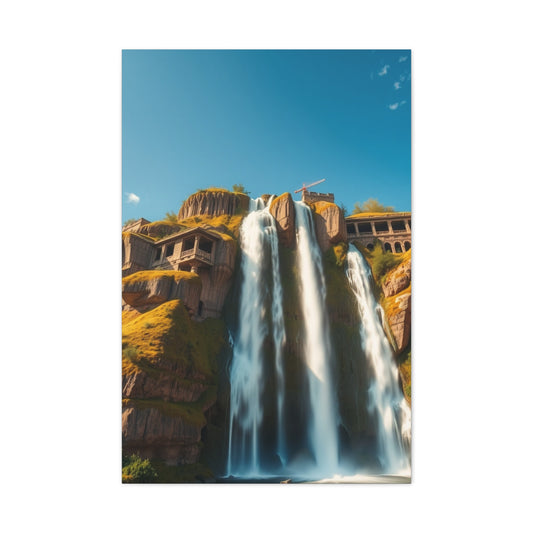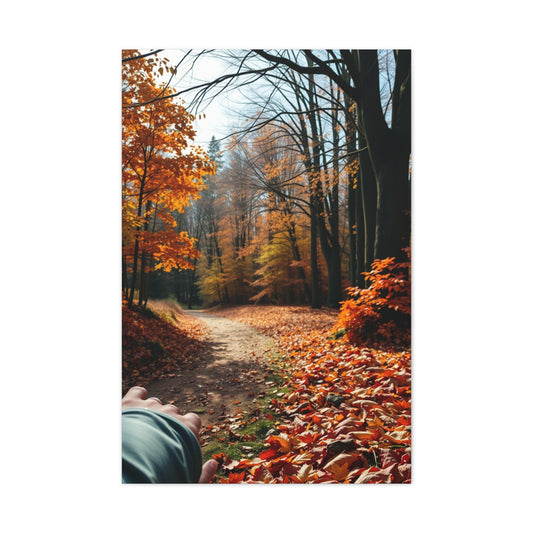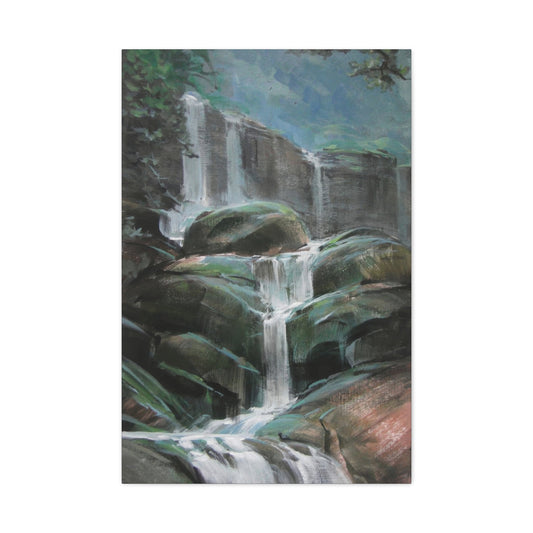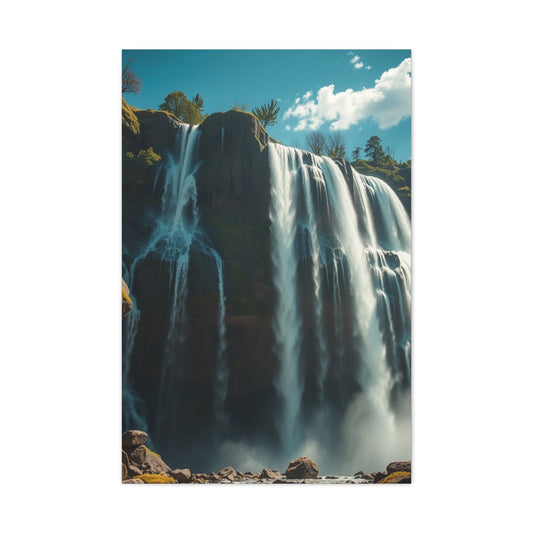Photographing children can be one of the most rewarding and creatively fulfilling aspects of photography. Whether you're a parent with a camera or a professional child photographer, capturing genuine emotion and candid expressions in toddlers and young kids often produces unforgettable images. But working with children also presents a unique set of challenges—they’re unpredictable, full of energy, and rarely interested in staying still. The good news? That spontaneity is where the magic lives. Instead of trying to direct them rigidly, the best approach is to build a framework that allows their personality to shine through. The following 13 creative ideas for photographing children are designed to inspire your next session, with practical tips for turning playful moments into timeless portraits.
1. Follow Their Curiosity, Not a Script
When photographing toddlers and young children, the golden rule is simple: let them lead. The most enchanting child portraits rarely result from rigid posing or staged smiles. Instead, they are born out of unguarded moments—when a child is lost in their own little world, exploring, observing, or simply being themselves. Children have a natural curiosity that is impossible to replicate. They are fascinated by the smallest details—a fluttering leaf, a patch of moss, the shimmer of sunlight reflecting off water. These seemingly ordinary discoveries become extraordinary when captured with intention. Allowing children to explore their environment freely not only helps them feel more comfortable but also lets you witness their world from a place of genuine interest. As a photographer, your role becomes that of a quiet observer and storyteller. You don’t need to direct every move or interrupt their play. Instead, be ready with your camera, anticipating those micro-moments of delight or surprise. A gentle breeze may tousle their hair, a giggle may erupt as they splash in a puddle, or a look of determination may cross their face as they balance on a log. These are the fleeting expressions that define a child’s character—and when captured candidly, they result in unforgettable imagery. Natural light is your best ally in these moments. Whenever possible, shoot during golden hour to infuse the scene with warm, flattering tones. Soft, diffused light not only enhances skin tones but complements the gentle, emotive nature of lifestyle child photography. Using a prime lens with a wide aperture—such as 35mm or 50mm at f/1.8 or f/2.0—creates a dreamy background blur, helping isolate the child from distractions and keeping focus on their face and expressions. It’s also important to remember that some children may need time to warm up. Not every child feels at ease in front of a camera, especially in unfamiliar surroundings. Respect their pace and allow them space to adjust. Begin by quietly capturing distant shots while they engage naturally. As they become more accustomed to your presence, you’ll be able to move in closer and capture more intimate perspectives. Props can be introduced subtly to enhance their curiosity without feeling intrusive. Think pinecones, wind chimes, bubbles, or a magnifying glass. These not only encourage exploration but also add texture and storytelling depth to your compositions. Avoid forcing interaction with props; instead, let the child choose how to engage. In post-processing, aim to preserve the integrity of the moment. Slightly enhancing contrast, adjusting white balance, or lifting shadows can help, but avoid over-editing. These images are about truth and tenderness, and your editing should reflect that. Use soft tones, warm highlights, and a slight vignette if it helps guide the viewer's eye toward the child. Letting children guide the session turns the experience into a shared adventure rather than a forced production. Parents will cherish these photographs not only for how their child looks, but for how they feel—expressive, free, and wholly themselves.
|
Related Catagories: |
2. Embrace Movement and Energy
Children are rarely still. Their kinetic energy is part of their identity. Rather than trying to contain their restlessness, embrace it fully. Photographing movement in child portraits allows you to create dynamic, lively images that tell the story of who they are right now—unfiltered, exuberant, and completely in the moment. Ask any experienced child photographer, and they'll tell you that stillness is fleeting. So, use it to your advantage. Instead of instructing children to pose stiffly or sit in one place, ask them to run toward you, leap over something, twirl around, or chase a balloon. These kinds of physical activities not only keep them engaged but evoke genuine emotion—laughter, determination, joy—that can't be faked. To capture these animated moments effectively, you’ll need to adjust your camera settings accordingly. Use shutter priority mode or manual mode with a high shutter speed—1/800s or faster is ideal—to freeze motion and avoid blur. Pair that with continuous autofocus tracking (AF-C or AI Servo) to keep the child in focus even as they dart in and out of your frame. Switching to burst mode or high-speed continuous shooting allows you to take multiple images in rapid succession, increasing your chances of catching the perfect mid-air leap or mid-giggle reaction. Wide open apertures (f/2.8 or wider) help you isolate the child against a soft background, but you must balance this with your depth of field. If your subject is moving unpredictably, consider stopping down slightly to f/3.5 or f/4.0 to maintain more of the subject in focus. Think about the environment, too. Open spaces like a beach, field, park, or a long pathway provide a natural arena for movement and give you more space to compose. You can guide the action subtly—invite them to run from one tree to another, jump off a rock, or race toward a parent. These activities make movement intentional without feeling overly posed. When shooting siblings or friends together, movement becomes even more expressive. Ask them to play tag, spin each other around, or race to see who’s the fastest. These interactions often lead to bursts of laughter, unguarded facial expressions, and playful gestures that bring your images to life. To add variety and dimension, experiment with different angles and perspectives. Shooting from a low vantage point—eye-level or even below—can emphasize a child’s enthusiasm and energy, making their movement feel larger than life. Alternatively, try overhead shots when they're lying in the grass catching their breath, capturing the contrast between motion and pause. Embracing movement also helps children who are camera-shy. Being told to stand still and smile can be overwhelming, but giving them the freedom to move lets them forget the camera altogether. As a result, they relax, drop their guard, and simply have fun—which is when the best pictures happen. After the session, your post-processing choices can further highlight the energy you’ve captured. Enhance contrast slightly to make the subject pop, or add a subtle motion blur effect to the background in editing if you want to emphasize speed. Maintain a balance between clarity and mood—avoid over-sharpening and keep colors true to the scene. Movement-based photography with children is as much about embracing the unpredictability as it is about skill. Every session is different, but the beauty lies in allowing each child to express their spirit naturally. Whether they’re sprinting through a sprinkler or spinning in circles until they collapse in laughter, capturing those energetic moments gives families a window into their child's unique personality—and that is the essence of meaningful child portraiture.
3. Make Space for Dancing and Spinning
Dance is a language of joy, and for children, it’s a natural response to music, excitement, or even just being in a wide-open space. Encouraging dancing and spinning during a child photography session offers a beautiful compromise between capturing active energy and maintaining control over movement. It keeps the child engaged, expressive, and within a smaller radius of your lens, allowing for spontaneous yet manageable action. Dancing is especially beneficial when photographing toddlers or preschool-aged children who may not yet understand posing cues. While they might not respond to direct instruction, they’ll often mimic behavior—so if you clap, twirl, or bounce to the rhythm, chances are they’ll follow your lead. This co-participation not only helps break the ice but also creates a connection between the photographer and the child, which naturally translates into more relaxed and genuine expressions. Clothing plays a pivotal role in these types of shots. Dresses with flowing skirts, capes, tutus, or any loose fabrics enhance the feeling of movement. As the child twirls, the clothing arcs and sways, creating soft, curving lines that add a dreamy aesthetic to your frame. Hair flying in motion, skirts lifting, and arms extended mid-spin introduce visual storytelling elements that reflect joy, freedom, and childhood innocence. Lighting is another crucial factor. If you’re outdoors, aim to shoot during the golden hours when the light is warm and directional. Backlighting can be especially effective during dance sessions—placing the sun behind the child will result in glowing outlines around their silhouette and create lens flare or bokeh that enhances the ethereal quality of your photos. Indoors, natural window light or soft artificial lighting works well. Make sure your shutter speed is high enough—typically 1/400s or faster—to freeze motion while keeping the image sharp. Use a lens with a wide aperture (like f/2.2 or f/1.8) to isolate the subject and achieve pleasing background separation, especially if shooting in a cluttered or visually busy environment. Music can also play a powerful role in setting the mood. A simple playlist of cheerful or gentle tunes can encourage a child to move, even if they’re initially shy. The key is to keep the atmosphere playful and unpressured. If music isn’t an option, rhythmic clapping or asking them to show you their “funniest dance move” can spark the same result. Be ready to shoot in burst mode to capture a full sequence of motion. Some of the most magical frames often lie in the transition—the moment before a spin, a foot slightly off the ground, or the laugh that follows a stumble. These minor in-between frames are packed with energy and character. When editing dance-focused child portraits, consider subtle adjustments that enhance lightness and motion. Lift the shadows slightly to maintain detail in movement, adjust white balance to keep skin tones soft and warm, and experiment with a gentle vignette to guide the viewer’s eye toward the center of action. Use sharpening sparingly so that the softness of the motion is preserved rather than overcorrected. Dancing, unlike staged poses, comes from an instinctual place in children. It's pure, unfiltered self-expression. For photographers, these moments offer a chance to document that purity in a way that feels timeless and unscripted. Encouraging movement through dance allows you to craft narrative-rich portraits while letting kids be their uninhibited selves—joyous, free, and fully alive in the frame.
4. Use Nature as Your Studio
The natural world offers an ever-changing, richly textured backdrop for child photography that no studio set can replicate. Outdoor environments—be they sunlit meadows, shaded woodlands, sandy beaches, or rustic farm paths—offer boundless visual opportunities and a sense of freedom that children instinctively respond to. Using nature as your studio gives your imagery context, mood, and authenticity. One of the greatest advantages of shooting outdoors is how the environment invites exploration. Children interact differently with nature than with indoor spaces—they kneel to observe ants, reach up to touch branches, or lie down to watch clouds. These interactions are gold for a lifestyle child photographer, providing natural poses and gestures that feel completely unforced. Encouraging this exploration allows you to photograph genuine moments of wonder, curiosity, and imagination. Each season brings its own visual identity and mood, providing an ever-evolving palette of color, texture, and atmosphere. In spring, budding flowers and soft green foliage set a pastel-toned stage for delicate imagery. Summer offers vibrant energy—sun-kissed skin, wildflower fields, and golden sunsets. Autumn turns the scene into a storybook with its warm amber hues, crunchy leaves, and early twilight. Winter, though more minimal, brings its own beauty with muted tones, bare trees, and snow-covered ground that reflect light softly and evenly. Location selection should be intentional yet flexible. Choose spots that allow children to move freely and safely. Look for places with natural features like rocks, logs, tall grass, or tree stumps that kids can climb or sit on. These natural props provide variety in height and composition, helping you craft layered, dimensional shots. When choosing your outdoor setting, consider both foreground and background elements. A cluttered or overly busy background can distract from your subject. Instead, opt for locations with clean depth—like a winding path, open sky, or tree-lined trail—that draw the viewer’s eye toward the child. Leading lines, frames within nature, and soft natural colors all contribute to compelling compositions. Lighting plays a vital role in outdoor photography. Aim to shoot during early morning or late afternoon when the sunlight is gentle and directional. Midday sun can be harsh and cast unflattering shadows, though dappled light through trees can offer creative possibilities. If the light is too intense, position your subject in open shade or use a simple diffuser. Cloudy days are also ideal as they act like nature’s softbox, creating even lighting and enhancing color saturation. Candid interactions with the environment should be encouraged throughout the session. Ask the child to collect pinecones, smell a flower, or listen for birds. Even waiting for a gust of wind to play with their hair or watching how they react to the textures underfoot can yield unexpected moments of magic. These natural behaviors convey the narrative of the place and the moment, turning simple portraits into timeless stories. Wardrobe choices can also complement the outdoor setting. Earthy tones, soft pastels, or even vibrant primary colors can stand out beautifully against natural backdrops. Flowing fabrics and textures like linen, cotton, or knits photograph well and harmonize with the organic surroundings. When photographing children in nature, be prepared for unpredictability. Weather, lighting, and mood can shift quickly, so adaptability is key. Keep your equipment minimal and mobile—a single fast prime lens and a lightweight camera body are often all you need. The less you have to carry, the more freely you can move and keep pace with the child. In post-production, maintain the integrity of the natural light and color. Avoid over-saturating or heavily retouching. Instead, enhance the mood by subtly boosting warmth, softening highlights, and fine-tuning contrast. Grain can be added for a nostalgic, filmic effect that suits outdoor storytelling. Ultimately, using nature as your studio means accepting the imperfection and spontaneity that comes with it. It’s not about controlling the elements but collaborating with them. Children feel more alive when outdoors, and when given the space to engage with the world around them, their true selves shine. Capturing that authenticity—set against the grandeur or simplicity of the natural world—results in portraits that resonate with timeless emotion and visual poetry.
5. Introduce Props That Invite Stillness
Photographing children often feels like chasing butterflies with a camera. Their curiosity and constant motion can make it difficult to guide them into a moment of pause. However, the right props can transform this dynamic. Thoughtfully selected and placed, props don’t merely fill space—they act as subtle invitations to settle, engage, and naturally pose without instruction. They offer visual structure, encourage interaction, and anchor the child to a focal point, all while enhancing the narrative of your photograph. The key lies in choosing props that captivate rather than constrain. Rustic wooden crates, vintage wagons, weathered suitcases, or handwoven baskets are excellent examples. These objects carry texture and character while providing a place for children to perch, lean, or climb into. Even a fluffy blanket spread over a soft patch of grass can offer both comfort and compositional grounding. The aim is to create an environment that feels inviting rather than staged. When children feel like they are part of the scene—rather than placed in it—they’re more likely to relax, stay engaged, and exhibit genuine expressions. Avoid props that look overly commercial or distract from the subject. Bright plastic toys or clunky objects with logos can draw attention away from the child and introduce visual noise. Instead, opt for pieces that harmonize with the session’s theme and surroundings. Neutral or earthy tones work beautifully outdoors, while soft pastels or muted palettes blend well in minimal indoor setups. Safety, of course, is non-negotiable.
|
Related Catagories: |
Always inspect props beforehand. Ensure there are no splinters, rust, chipping paint, or instability. For toddlers especially, choose low-to-the-ground items to reduce any risk of falls. If you're working with containers like baskets or barrels, stabilize the base and keep an adult within arm’s reach. Never sacrifice safety for aesthetic. The versatility of props extends to how they shape your framing and composition. A child nestled in a basket surrounded by fallen leaves creates a contained scene with natural lines leading the eye inward. A rocking chair positioned in front of a window allows for play with light and shadow. Props can also help with perspective—placing a child slightly elevated lets you shoot from below or even overhead, introducing variety and dynamism to your portfolio. Another subtle benefit of props is their role in storytelling. A child peeking over the edge of a wooden toy box hints at curiosity. Sitting on a vintage suitcase evokes themes of travel or adventure. Cradling a doll in a tiny armchair creates an echo of grown-up behavior, adding layers of interpretation to your image. Simplicity is paramount. Avoid over-cluttering your scene. The prop should complement, not dominate. Think of it as a stage for your young subject—not the star of the show. Use props sparingly and strategically. One or two well-chosen pieces will always outperform a chaotic setup. Don’t be afraid to use your environment as a prop itself. A hollow tree trunk, a sturdy log, or a sunlit step can be just as effective. Even natural textures like hay bales or a large cushion on a front porch can offer a place for children to pause long enough for you to capture the moment. In post-processing, aim to keep tones natural and cohesive. Slightly enhancing the texture of wooden elements or softening the blanket’s fibers in editing can emphasize the prop without pulling focus. Avoid overly saturated filters that shift attention from the child’s face or expressions. Ultimately, the role of props in child photography is to nurture stillness through intrigue. When chosen with care and intention, they invite interaction, spark imagination, and offer children a moment of rest amid the playful chaos. And in those quiet, still moments—when their hands explore, their eyes wander, or they simply sit content—you’ll find the timeless frames every family will treasure.
6. Let Favorite Toys Join the Shoot
A child's favorite toy is far more than a plaything. It’s a companion, a comfort, and in many ways, a piece of their developing identity. Including such a cherished object in a photo session transforms the dynamic from formal portrait to intimate documentation. These toys hold emotional weight and serve as natural bridges between the child and your camera, encouraging interaction while revealing elements of their personality that might otherwise remain hidden. For toddlers and younger children especially, being photographed can feel intrusive. They're not yet used to being the center of attention, and the sight of a camera lens may prompt unease. A favorite stuffed animal, a squeaky dinosaur, or a cherished blanket can provide grounding reassurance in this moment of vulnerability. The result? A child who feels safe, content, and far more likely to offer those honest, unfiltered expressions that define great child photography. When incorporating toys into your session, embrace their imperfections. The frayed edges of a well-loved bunny or the faded paint on a miniature truck tells a story. These details hold emotional resonance, especially for parents who have watched those toys become daily fixtures in their child’s life. Rather than asking children to pose with their toys, observe how they naturally engage with them. Do they cradle it close, share it proudly, or line up multiple figures in a specific order? These small rituals offer windows into their inner world. Let these actions unfold organically and frame them with gentle curiosity. When guiding the interaction, subtle cues are more effective than firm direction. Say something like, “Can your teddy bear help you look at the camera?” or “I’d love to meet your toy—can you show me how it dances?” These prompts inspire playful collaboration without pressure. Keep your camera ready to capture fleeting transitions—glimpses of pride, laughter, or even a quiet, thoughtful gaze. Positioning the toy near your lens can also help focus the child’s attention. Holding it just above your camera or attaching it temporarily to the lens hood can bring the child’s gaze toward you without demanding it. This technique is especially helpful for capturing eye contact with very young subjects who tend to look everywhere except the lens. While favorite toys offer many photographic advantages, it’s essential to be mindful of composition. Ensure the toy complements rather than overtakes the frame. Use shallow depth of field to subtly emphasize the child while allowing the toy to occupy a supporting role. A wide aperture around f/2.0 to f/2.8 will gently blur the toy’s background features while keeping enough detail to preserve its recognizability. Color harmony between the toy and the setting can also help integrate it seamlessly into your visual story. If the toy is neon pink, avoid pairing it with overpowering backdrops or busy patterns that compete for attention. Alternatively, build your session around the toy’s colors—placing the child on a coordinating blanket or in a neutral environment to allow the toy to stand out without distraction. One of the most meaningful aspects of toy-inclusive photography is its nostalgic power. Long after the toy has been outgrown or lost, the photographs preserve that bond forever. Parents will look back at these images and remember the bedtime routines, the countless car rides, and the moments of comfort the toy provided. It transforms the photo into more than a keepsake—it becomes a time capsule. For photographers working in family or lifestyle photography, it’s a good idea to ask parents ahead of time if there’s a toy that should be included in the session. If they forget to bring one, consider having a few neutral, timeless toys on hand. Wooden blocks, soft plush animals, or simple musical instruments can serve as backups that still engage the child meaningfully. In your post-processing workflow, enhance the warmth and intimacy of these images. Slight adjustments to shadows, subtle vignetting, and skin tone refinement can elevate the emotional impact without altering the authenticity. Avoid removing scuffs or imperfections from the toy—they are part of the narrative. By welcoming a child’s favorite toy into your session, you’re doing more than keeping them occupied. You’re acknowledging the emotional fabric of their world and celebrating what makes them feel secure. These photographs reflect real childhood—the bonds they form, the comfort they seek, and the joy of carrying a little friend with them everywhere. In that recognition lies the secret to timeless child portraiture.
7. Use a Trusted Person to Spark Natural Emotion
Getting a child to smile on command can lead to artificial expressions. Instead, enlist someone the child knows and trusts—a parent, sibling, or grandparent—to stand behind the camera and make funny faces or perform a silly dance. This familiar interaction breaks the ice quickly. A child’s laughter in response to a loved one is genuine and irresistible, making your images far more compelling. You can also capture interaction between the child and the helper for additional heartwarming frames.
8. Add Magic With Bubbles or Balloons
Bubbles and balloons are time-tested tools for eliciting joyful reactions. Bubbles, in particular, enchant toddlers and provide floating, whimsical visuals that enhance the lighthearted mood of your portraits. Use a bubble machine or blow them manually, focusing your lens on the child’s reactions—chasing, laughing, popping. Balloons are equally effective but better suited for older children, as popping sounds may startle toddlers. They also function as a thematic element, especially in milestone or birthday sessions. Always check with parents about allergies or preferences before using any novelty props.
9. Use Edible Props for Delightful Distractions
Few things light up a toddler's eyes like food—especially when it's fun, colorful, or sweet. From a pastel cupcake to a dripping ice cream cone, food introduces a playful and sensory-rich dynamic to child portraits. It’s also perfect for themed shoots. A watermelon wedge in the summer or caramel apple in the fall adds seasonality. Just ensure that the food is age-appropriate and allergen-free. Messy moments can be some of the most cherished captures—think frosting-covered cheeks and juice-stained fingers.
10. Offer Props That Encourage Interaction
Keep inquisitive hands occupied with interactive props. Items like musical instruments, puzzles, magnifying glasses, or stacking toys give children something to focus on. These elements reduce distractions and open the door to intimate, absorbed moments. You’ll capture expressions of curiosity, accomplishment, and concentration—each revealing a different side of their personality. These images are wonderful for parents, who often see their child’s inner world reflected more truthfully in these moments than in standard portraits.
11. Introduce Games to Build Connection
Simple, silly games are invaluable tools for building trust and rapport with children during a photoshoot. Games like peek-a-boo, freeze dance, or “copy me” not only engage the child but help loosen them up in front of the lens. The interaction draws out real laughter, expressive faces, and natural body language—without the child even realizing they’re being photographed. It also transforms the session into a shared experience, where connection becomes just as important as the final product.
12. Use Reverse Psychology for Playful Reactions
For strong-willed or mischievous children, reverse psychology can be a brilliant tactic. Tell them not to smile, challenge them to keep a straight face, or act surprised when they disobey. It turns the session into a fun game that naturally sparks genuine giggles and silly expressions. This method works especially well in sibling photos—create a mock competition to see who can stay serious the longest. The inevitable laughter that follows creates some of the most candid and joyful moments of the session.
13. Capture Real Moments Between Siblings
Photographing siblings together presents a beautiful opportunity to showcase real relationships. Rather than lining them up and asking for smiles, encourage interaction. Have them whisper secrets, give a piggyback ride, or dance together. Older siblings can be asked to help guide or comfort the younger ones, creating a sense of connection and responsibility. These interactions often result in natural compositions, tender gestures, and emotional authenticity that elevate your portraits from posed to poetic.
FAQs About Capturing Children in Photos
What’s the best way to take toddler photos indoors?
Look for natural light—rooms with large windows are ideal. Open curtains fully, turn off overhead lights to avoid color casts, and use wide apertures and higher ISO settings to let in more light. Consider minimal props to keep the space uncluttered and inviting.
How do I photograph a one-year-old effectively?
One-year-olds are fast, curious, and rarely still. Plan for short bursts of shooting. Keep props and distractions ready, use a fast shutter speed, and capture them at play. The goal isn’t perfection—it’s storytelling.
How can I encourage cooperation from my toddler?
Bring items they enjoy—snacks, favorite toys, or a cozy blanket. Work around their schedule to avoid nap or meal times. Give them space to warm up and let them take breaks when needed. When a toddler feels safe and happy, they’ll cooperate naturally.
Final Reflections on Photographing Children With Joy and Intention
Childhood is fleeting, raw, and filled with wonder. Photographs of this time should reflect not just how a child looks—but who they are in that moment. When we release the need for perfection and instead focus on play, connection, and emotion, we open the door to truly meaningful portraits. These child photography ideas are more than techniques—they are invitations to step into a child’s world. Whether it’s through laughter, exploration, or quiet observation, the key is to honor their unique spirit. As you create a space for joy and discovery, your camera will do the rest—freezing time into visual memories that will be cherished for generations.











